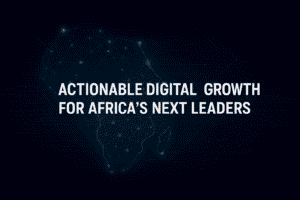
In today’s evolving digital landscape, businesses are facing more competition than ever. With a global market at every consumer’s fingertips, standing out is no longer about having the flashiest website or the most aggressive advertising strategy. The true differentiator is understanding and catering to the user—the very core of every successful product or service. This shift towards user-centric design is not just a trend; it’s the future of business growth.
What is User-Centric Design?
At its core, user-centric design is the practice of creating products, services, and digital experiences that prioritize the needs, behaviors, and preferences of users. It’s about putting people first, crafting solutions that solve their problems, enhance their experiences, and make their lives easier. Whether it’s a website, mobile app, or e-commerce platform, the design process revolves around understanding users, gathering their feedback, and iterating designs to meet their expectations.
The Business Benefits of User-Centric Design
At its core, user-centric design is the practice of creating products, services, and digital experiences that prioritize the needs, behaviors, and preferences of users. It’s about putting people first, crafting solutions that solve their problems, enhance their experiences, and make their lives easier. Whether it’s a website, mobile app, or e-commerce platform, the design process revolves around understanding users, gathering their feedback, and iterating designs to meet their expectations.
1. Increased Customer Loyalty
Customers who feel understood are more likely to remain loyal. User-centric design ensures that your digital experiences are seamless, intuitive, and enjoyable. When users find it easy to navigate your website or app, complete transactions, or access information, they are more likely to return. Positive experiences build trust, fostering long-term customer relationships.
2. Higher Conversion Rates
Every interaction a user has with your digital presence is an opportunity to convert whether it’s making a purchase, signing up for a newsletter, or requesting a service. When the user experience is intuitive and aligned with the customer’s needs, conversion rates naturally improve. Reducing friction at critical touchpoints, such as checkout pages or contact forms, can lead to higher sales and inquiries.
3. Better Brand Reputation
In a world where consumers can share their experiences instantly, brand reputation is everything. A well-designed, user-friendly digital experience can generate positive reviews, word-of-mouth referrals, and social media shares. On the flip side, poor user experiences can quickly lead to negative feedback that spreads rapidly online. By investing in user-centric design, businesses can protect and enhance their brand’s reputation.
4. Enhanced Product Development
User-centric design isn’t just about aesthetics or usability—it’s also a valuable tool in product development. By continuously gathering feedback from users, businesses can gain critical insights into how their products or services are used and where improvements can be made. This iterative design process allows for more relevant, innovative, and successful offerings, ensuring your products stay competitive.
Key Elements of Effective User-Centric Design
1. Empathy
Empathy is the foundation of user-centric design. It’s about stepping into your users’ shoes, understanding their pain points, and crafting solutions that genuinely improve their experience. This involves conducting user research, listening to feedback, and observing how customers interact with your digital platforms.
2. Simplicity
In design, less is often more. Simplicity in navigation, layout, and content helps users achieve their goals quickly and efficiently. Avoiding unnecessary complexity reduces the chances of user frustration and abandonment. An easy-to-use interface increases customer satisfaction and drives engagement.
3. Consistency
A consistent user experience across all digital touchpoints ensures that users feel comfortable and familiar with your brand. Whether they are interacting with your website, mobile app, or social media platforms, consistency in design elements (such as colors, fonts, and messaging) strengthens brand identity and trust.
Future Trends in User-Centric Design
As businesses continue to embrace digital transformation, several trends are shaping the future of user-centric design:
Personalization:Customers now expect personalized experiences tailored to their individual preferences. Through data analysis and AI, businesses can deliver custom content, product recommendations, and targeted marketing based on user behavior.
Voice and Gesture-Based Interfaces:With the rise of voice assistants and touchless technologies, user interfaces are evolving. Designing for voice and gesture commands will become critical as more users rely on these devices to interact with digital content.
Inclusive Design:A user-centric approach means designing for everyone, including individuals with disabilities. As inclusivity becomes a greater focus, businesses will need to ensure their digital platforms are accessible to all users.
Conclusion
User-centric design is no longer optional in today’s business environment—it’s essential. By prioritizing the needs of your customers, you can create meaningful, engaging experiences that not only attract users but turn them into loyal advocates for your brand. In the future of business growth, those who place users at the center of their design strategy will be the ones who thrive.




